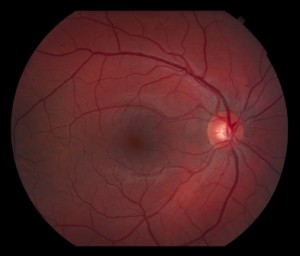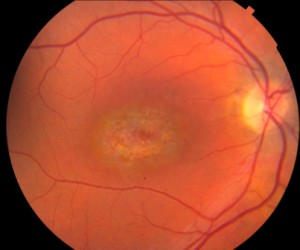Normal Macula Plaquenil Toxicity

 Edmonton Plaquenil Screening Protocol
Edmonton Plaquenil Screening Protocol
There are several medications that are helpful in managing the problems associated with diseases such as lupus erythematosus, rheumatoid arthritis, and other inflammatory and dermatologic conditions. Unfortunately, despite their many benefits, both medications, chloroquine (Aralen) or its analogue, hydroxychloroquine (Plaquenil), carry with them a very small risk of permanent vision loss.
Eye screening by an ophthalmologist is important to help identify any damage to the eye at the earliest stage possible. This is very important as once damage has occurred it cannot be reversed. In addition, should damage occur, it can continue to worsen even if (hydroxy)chloroquine is stopped. Despite these risks, your referring doctor believes that at this time the benefits to you in taking these medications are greater than the risks to your eyes.
Now that you have been referred to the ophthalmologist for eye screening, you will be assessed on an annual basis for as long as you are taking chloroquine or hydroxychloroquine. Even if you do stop the medication, it may be necessary to continue eye screening for up to 5 years after you have stopped.
There are several ways to test for damage from chloroqine and hydroxychloroquine to the eye. In Edmonton, we perform many of these tests on an annual basis to maximize our chances at picking up any early changes from (hydroxy)chloroquine. As part of the Edmonton (hydroxy)chloroquine screening protocol you will undergo tests once per year at the hospital and once per month at home.
Your first screening visit will be an in person assessment by the ophthalmologist, after this, unless there are problems found, you will be followed with testing every year at the Royal Alexandra Hospital testing centre. You will also be asked to follow your own eye health every month by using a special chart called the Amsler grid.
The following tests are used as part of the Edmonton (Hydroxy)chloroquine Screening Protocol:
- Amsler grid: This small grid is given to you to test once per month at home. It should be held at approximately 12 inches (30 cm) from the face. If you wear glasses for reading, you should use them for the test. Closing one eye, look directly at the centre dot, then without moving your eye assess the rest of the grid for faded or missing areas, or loss of central vision. Once one eye has been tested, repeat the process for the other eye. If you find a problem with your vision, you should contact your ophthalmologist for an in-person examination.
- Color photography of the retina and cornea: This test is to look to see if there has been any accumulation of medication in the cornea, or damage to the retina while maintaining a permanent record for comparison the following year.
- Visual field (10-2): This test is to identify whether or not there is any loss of central field of vision. This test is performed at the hospital, takes less than 10 minutes per eye, and requires you to look at small flashing lights.
- D-15 colour testing: This test requires you to line up a number of coloured circles in order. Damage from (hydroxy)chloroquine can cause loss of colour vision.
- Multifocal ERG: This test is a relatively new test, which at times can identify changes from (hydroxy)chloroquine at a stage earlier than any of the other tests. Unfortunately other problems with vision can lead to abnormal results. For this reason, although we do use this test, it is often repeated prior to making any recommendations regarding changing or stopping (hydroxyl)chloroquine.
Other tests that are not part of the routine Edmonton (hydroxy)chloroquine testing protocol :
- Fluorescein angiography: If damage from (hydroxy)chloroquine is suspected, an ophthalmologist may order this test to help confirm the diagnosis. This test involves injecting dye into the arm followed by photographs of the back of the eye. (Hydroxy)chloroquine damage can show up as a ring of damage around the central part of vision. If any problems are identified with testing at the hospital, you will be contacted directly by the ophthalmologist or a member of the eye care team.
If you notice a problem when self-testing with the Amsler grid, you should contact your ophthalmologist directly.
As the testing centre at the Royal Alexandra Hospital has limited spots available it is very important that you attend your testing appointment. If you cannot make your appointment please let the testing centre or your ophthalmologist’s office know as early as possible so that your testing appointment can be given to someone else.